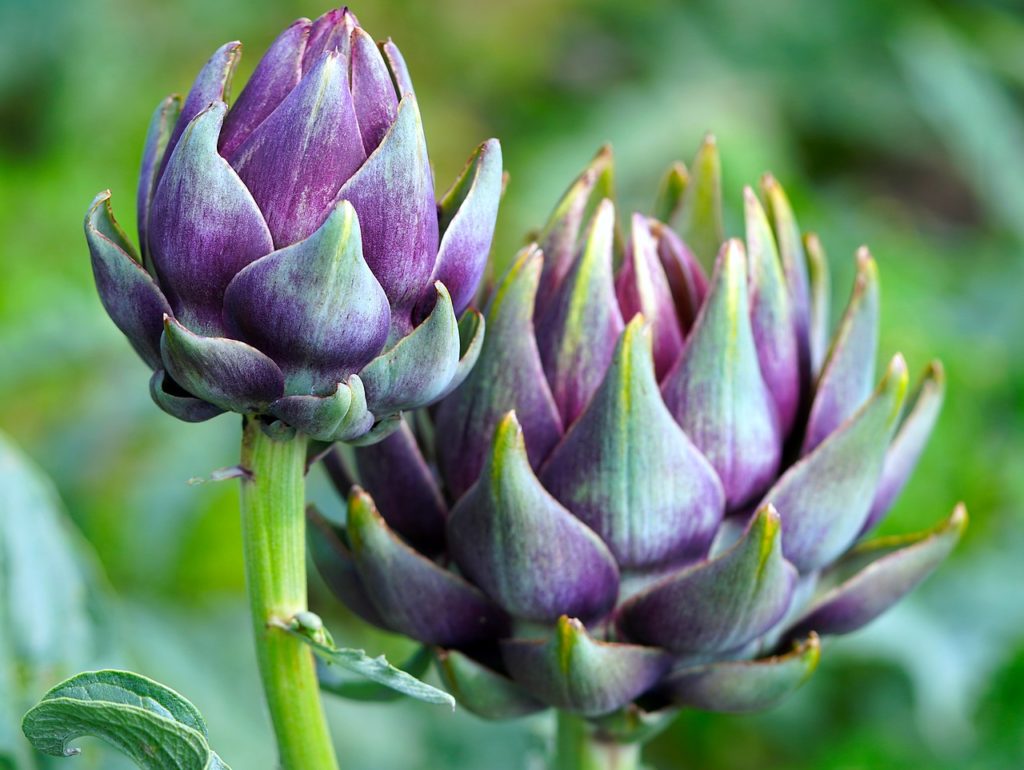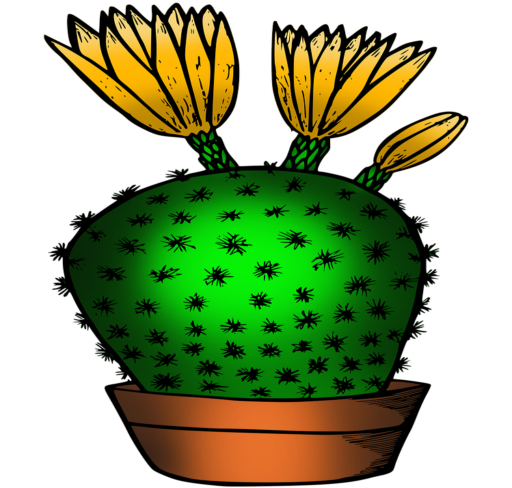What is an Artichoke?
Artichokes demonstrate that not all thistles are a nuisance. Eaten by Greeks, Romans and Royalty, this member of the thistle family’s been cultivated as a gourmet food for centuries.
Where do artichokes grow? Artichoke growing zones range from Zones 3-11, while artichokes grow as perennials in Zones 7-11. Colder zone gardeners can still grow artichokes, but only as annual vegetables. Most of the plant is edible, but the portion usually eaten is the immature flower bud in the center, formed before the artichoke blooms.

Pick The Correct Location for the Artichoke
The care of an Artichoke plant begins with abundant drainage and plenty of sunlight. Often, gardeners suppose their artichoke plants haven’t returned in the spring due to a cold winter but, water-logged soil is usually to blame. Regularly sitting in moisture will damage the crown and root system. Artichokes love to use up all the nitrogen from the soil. If you’re planting artichokes in your vegetable garden, good artichoke companion plants include tarragon, cabbage, and peas. These plants will not compete for nutrients.
Prepare the Soil for Artichokes
Artichokes grow in most soils, but deeply worked, nutrient-rich soil full of organic matter will increase your artichoke harvest. To check the consistency of your soil, grasp a handful, give it a squeeze, and then open your hand. Correctly mixed soil will not stick together, but it also won’t fall apart. It should lightly crumble across your hand. To prepare your artichoke bed, dig your row at least 7” deep and work in 4 inches of compost.
Plant the Artichokes
Hardening the Plants
Before planting in the garden, seedling plants need to be “hardened off”. Accustom young plants to outdoor conditions by moving them to a sheltered place outside for a week. Be sure to protect them from wind and hot sun at first. If frost threatens at night, cover or bring containers indoors, then take them out again in the morning. This hardening-off process toughens the plant’s cell structure and reduces transplant shock and scalding.
Growing Artichokes from Seed is Difficult
Planting artichokes from seed can be a bit of a speculation – they don’t always stay true to seed package labels. Growing artichokes from seed isn’t unmanageable but be cautioned it takes a sometime. Artichoke’s seedlings frequently need to be around 60 days old before transporting to your garden. Root divisions are a much easier option and are widely available from both local and online nurseries and garden centers.
Artichokes Need Plenty of Space
With a height of 2 to 3 feet and a mature diameter of up to 5 feet, artichokes take up a lot of space. Artichokes plants require full sun, so if you plant them too closely together, the large plants can shade smaller ones. Plant your artichoke transplants in a row at an interval of 4 to 6 feet. Placing rows 6 to 7 feet apart will allow room to easily water, fertilize and harvest. Raking the row up in a mound or with irrigation channels will help improve the soil drainage.
Prepare the Soil
Prepare the bed by turning the soil under to a depth of 8 inches. Level with a rake to remove clumps of grass and stones. Dig a hole for each plant large enough to amply accommodate the root ball. Carefully remove the plant from its pot and gently loosen the root ball with your hands to encourage good root development. Fill the planting hole with soil to the top and press soil down firmly with your hand leaving a slight depression around the plant to hold water. Use the plant tag as a location marker. This is particularly important if you are trying different varieties. It is very difficult to tell which variety is which from the foliage.
Water and Mulch
Water thoroughly, so that a puddle forms in the saucer you have created. This settles the plants in, drives out air pockets and results in good root-to-soil contact. Mulch deeply to keep the soil as cool as possible.

Grow the Artichokes
Keep weeds under control during the growing season. Weeds compete with plants for water, space, and nutrients, so control them by either cultivating often or use a mulch to prevent their seeds from germinating. Avoid disturbing the soil around the plants when weeding.
Keep plants well-watered during dry periods to promote rapid, uninterrupted growth. Plants need about 1 inch of rain per week during the growing season. Use a rain gauge to check to see if you need to add water. It’s best to water with a drip or trickle system that delivers water at low pressure at the soil level. If you water with overhead sprinklers, water early in the day so the foliage has time to dry off before evening, to minimize disease problems. Keep the soil moist but not saturated.
Monitor for pests and diseases. Check with your local Cooperative Extension Service for pest controls recommended for your area.
Artichoke Seeds – Purple Italian Globe, Ve…
Grow Heirloom Artichokes – Plant Purple Italian Globe Artichoke SeedsAdd some color and… [More]
Refer to Planting Your Garden to get help in planting artichokes in various deserts environments.
